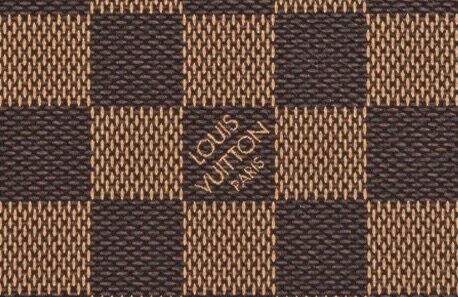Abstract
In the last few years, more and more information has come to light regarding just how damaging the fashion industry has been to the environment. Furthermore, the horrid labour practices prevalent throughout the fashion supply chain have also been the subject of various articles and news reports. Hence, it is no wonder that people have been calling for a more sustainable and ethical fashion industry. The fashion industry too has begun steering itself in that direction as well. However, Africa is generally ignored in these conversations. This article considers the current state of sustainable fashion in Africa, as well as how Africa has and can contribute to the sustainable fashion movement.
Keywords: Sustainable Fashion, Fashion Industry, Africa
Introduction
The fashion industry in Africa is a growing industry. It is one of the fastest-growing industries in Africa[1]. The industry in Africa has experienced exponential growth, which is predicted to increase even more[2]. However, Africa is a continent consisting of mostly underdeveloped nations with a population of over a billion people, the developing indigenous fashion industry is not nearly prolific enough to fully support the continent’s clothing needs. This is why the continent’s most abundant source for clothing is China[3], who fulfills the need with low cost, less durable clothing.
However, these types of clothing are a major part of a serious problem with the fashion industry – wastage and pollution that has caused degradation to the environment. The statistics are damning, cutting across both environmental damage and labour practices.
For instance, the United Nations Environment Programme published a press release in 2019 that indicted the fashion industry as the cause of 8% of carbon emissions worldwide[4]. The fashion industry has particularly affected water, with textile dyeing and finishing thought to contribute to 20% of the world’s water pollution[5]. In terms of labour practices, the numbers are not much better. Fashion Checker said in 2020 that 93% of the brands they surveyed, which included well-known brands like Adidas, Asos, Gucci, Nike, Puma, and Hugo Boss, were not paying their workers a living wage[6].
A deeper dive into this issue will reveal just how precarious the situation is. The situation cannot be ignored, hence the demand for a more sustainable, more ethical fashion industry. The world has already begun moving in this direction, like a gigantic ship making a U-turn. How does Africa factor into the situation?
What is Sustainable Fashion?
Sustainable fashion can be defined as fashion (that is, clothing, shoes, and accessories) that are manufactured, designed, marketed, and used in the most sustainable manner possible. Sustainable fashion is usually two-pronged, consisting of both the environmental aspects and the socioeconomic aspects.
The environmental aspect involves making fashion in ways that benefit, or at the very least, do not damage the environment. This can be seen in actions like reducing incineration of clothes or dumping of clothes in landfills; recycling clothing; reducing agrochemicals used in producing cotton; reducing water usage in manufacturing; and so on.
The socioeconomic aspect includes things like ensuring fairer labour practices and improved standards of living for workers throughout the supply chain; transparency from brands about policies, procedures, and practices; fairer wages; reduction of child labour to mention a few.
The difficulty in making fashion sustainable lies in considering these environmental and socioeconomic issues, while still ensuring that the industry is profitable. This is why many have added this to the three-pronged approach of sustainable fashion[7].
Nonetheless, the shift towards sustainable fashion is happening – slowly but surely. There has been an increase in environmentally conscious fashion startups in recent years (such as Rothy’s). Fashion brands are introducing more eco-friendly product lines. Fashion companies are more transparent about their policies and practices. The shift is commendable.
Curiously though, Africa is often left out of these discussions on sustainable fashion. Although the reason for this may be the fact that Africa is struggling to keep pace with the movement of sustainability happening in the fashion industry, it should also be noted that Africa, with its unique situation, must play a key role if fashion is to be truly sustainable.
How Unsustainable Fashion Affects Africa
The problem of unsustainable fashion also affects Africa, but in different ways than in the major fashion bastions of Europe and the United States.
Africa’s major problem in terms of fashion sustainability is the continent’s over-reliance on imported clothing from other countries, particularly China. These garments tend to be the very embodiment of ‘fast fashion’, low quality and cheaply produced. This means that clothes get easily damaged and are discarded unceremoniously in landfills and dumpsites. Fast fashion is one of the biggest culprits in the fashion industry’s famous unsustainable practices, hence it goes without saying that there is a need for this to be addressed.
Unsustainable fashion practices also affect Africa in terms of raw materials. Africa exports more than 9% of the world’s cotton[8], Mali and Burkina Faso are famous cotton-producing countries. Cotton production is a water-intensive undertaking, with more than 5,000 gallons of water needed to produce just one kilogram of cotton, which roughly equals a pair of jeans and one T-shirt[9].
Wildlife such as crocodiles is sought after by the fashion industry for their skins, which are used to make shoes and handbags. This demand has not helped in the preservation of wildlife, prompting concerns that they may become endangered.
All these points make it clear that Africa needs sustainable fashion too, especially since the global fashion industry cannot become fully sustainable if Africa’s sustainable fashion problems are not addressed. Therefore, how has the continent contributed to sustainable fashion so far, and how can it contribute further?
Africa and Sustainable Fashion
Africa has contributed and can contribute to sustainable fashion in many ways.
- Second-hand clothes
To put it simply, Africa has a thing for secondhand clothing. Africa has a big secondhand clothing market, accounting for 35% of the world’s $3.67 billion used clothes purchase in 2016[10]. It is thought that about 8% of people in Africa wear imported secondhand clothes. This is a form of recycling and has saved a bounty of clothing that would have otherwise been discarded in the countries they are imported from. The repurposing of these clothes can be viewed as an eco-friendly option.
However, this cannot be sustained, as it has affected local clothing industries. Inevitably, there will be pushback. Rwanda, Kenya, and other members of the East African Community (EAC) announced in 215 that they would ban secondhand imports in 219, although only Rwanda followed through.
Secondhand clothing works as a temporary eco-friendly option, but there are more long-lasting ways to contribute to sustainable fashion.
- Rise of sustainable fashion brands
Many fashion brands in Africa see the need to move to more sustainable practices in fashion and they are rising to the task. Some use organic fabrics, while others manufacture their pieces from secondhand clothing. Brands such as Lisa Folawiyo, Artesan, La Falaise Dion, and so on are at the forefront of sustainable fashion production in Africa.
However, these brands are still operating in a small sphere of influence, all things considered. They are not well-known outside Africa, and they barely make a dent in the behemoth that is the global fashion industry.
Nonetheless, these brands are blazing a trail, however small, and hopefully, bigger fashion brands around the world acknowledge it and follow in their footsteps.
- Different fashion culture from the West
Another important point in favour of the African fashion industry is the fact that the African fashion scene is markedly different from the Western fashion scene in the sense that it is less seasonal and mass-produced. On the contrary, the fashion scene in Africa operates on a more made-to-order basis, where a client demands clothes before it is made according to that client’s specifications. This reduces wastage and conserves materials, and it is generally more eco-friendly than the Western model.
- Traditional methods
Many of Africa’s traditional fashion practices are sustainable, from woven textiles in Nigeria and Ghana, to bark cloth in Uganda, to beadwork in Kenya. These processes were in use by ancient peoples living in these parts, but they died down when the faster method of producing cloth through cotton became popular. However, revitalisation and modernisation of these processes have the potential to play a huge role in making the manufacturing of fashion more sustainable. It will have the added advantage of keeping dying traditions alive.
Conclusion
While Africa is contributing to sustainability in the fashion industry, its contributions so far are negligible compared to the scale of the fashion industry. For example, Africa has done nothing significant that has affected the ‘People’ part of the sustainability project. Furthermore, the strides made towards more eco-friendly production and practices are not yet large scale.
It is hoped that, in the nearest future, Africa plays a bigger role in pushing the fashion industry towards the sustainability it so sorely needs.
[1] Guest Author. (2020, March 2). The Fastest Growing Industries in the Booming African Economy. The African Exponent. https://www.africanexponent.com/post/7200-the-fastest-growing-industries-in-the-booming-african-economy
[2] Statista projects an annual growth rate for the African fashion industry of 14.2% between 2020 and 2024.
[3] Fibre2Fashion. (n.d.). The Growth of Sustainable Fashion in Africa. Retrieved August 14, 221 from https://www.fibre2fashion.com/industry-article/8568/the-growth-of-sustainable-fashion-in-africa?amp=true
[4] Villemain, C. (2019, March 14), UN Alliance For Sustainable Fashion addresses damage of ‘fast fashion’ [Press Release]. https://www.unep.org/news-and-stories/press-release/un-alliance-sustainable-fashion-addresses-damage-fast-fashion
[5] Kant, R. (2012). Textile dyeing industry an environmental hazard. Natural Science, 04(01). 22-26. https://doi.org/10.4236ns.2012.41004
[6] FashionChecker: wages and transparency in the garment industry. (2020). Fashion Checker. https://fashionchecker.org/
[7] The slogan is ‘People, Planet, Profit’, with ‘People’ representing the socio-economic aspect of sustainable fashion, ‘Planet’ representing the environmental aspect, and ‘Profit’ representing the economic benefits of sustainable fashion to brands and consumers.
[8] Multiple African Countries: Cotton made in Africa (CmiA) -. (n.d.). Better Cotton Initiative. Retrieved August 15, 2021, from https://bettercotton.org/where-is-better-cotton-grown/cotton-made-in-africa-cmia/
[9] Cotton | Industries | WWF. (n.d.). World Wildlife Fund. Retrieved August 15, 2021, from https://www.worldwildlife.org/industries/cotton
[10] Team B.B.C. (2018, July 27). Reality Check: Why some African countries don’t want charity clothes. BBC News. https://www.bbc.com/news/world-africa-44951670
Author:  A writer, a freelancer, an Intellectual Property Law enthusiast, and a recent graduate from the Faculty of Law, University of Ilorin, Precious Oluwatobi Emmanuel is known for wearing a lot of hats. He has written agreements and documents for newly established businesses, to writing articles for websites online. Precious Oluwatobi Emmanuel is a recent alum of the University of Ilorin, Ilorin, where he will receive a Bachelor of Laws by October. He developed an interest in Intellectual Property Law when he wrote a story, and showed it to someone, and then saw it posted online with the person credited as author. This event made him want to know what protections were available in situations like that. Once he started on the path of Intellectual Property Law, it became his favourite aspect of law.
A writer, a freelancer, an Intellectual Property Law enthusiast, and a recent graduate from the Faculty of Law, University of Ilorin, Precious Oluwatobi Emmanuel is known for wearing a lot of hats. He has written agreements and documents for newly established businesses, to writing articles for websites online. Precious Oluwatobi Emmanuel is a recent alum of the University of Ilorin, Ilorin, where he will receive a Bachelor of Laws by October. He developed an interest in Intellectual Property Law when he wrote a story, and showed it to someone, and then saw it posted online with the person credited as author. This event made him want to know what protections were available in situations like that. Once he started on the path of Intellectual Property Law, it became his favourite aspect of law.


















